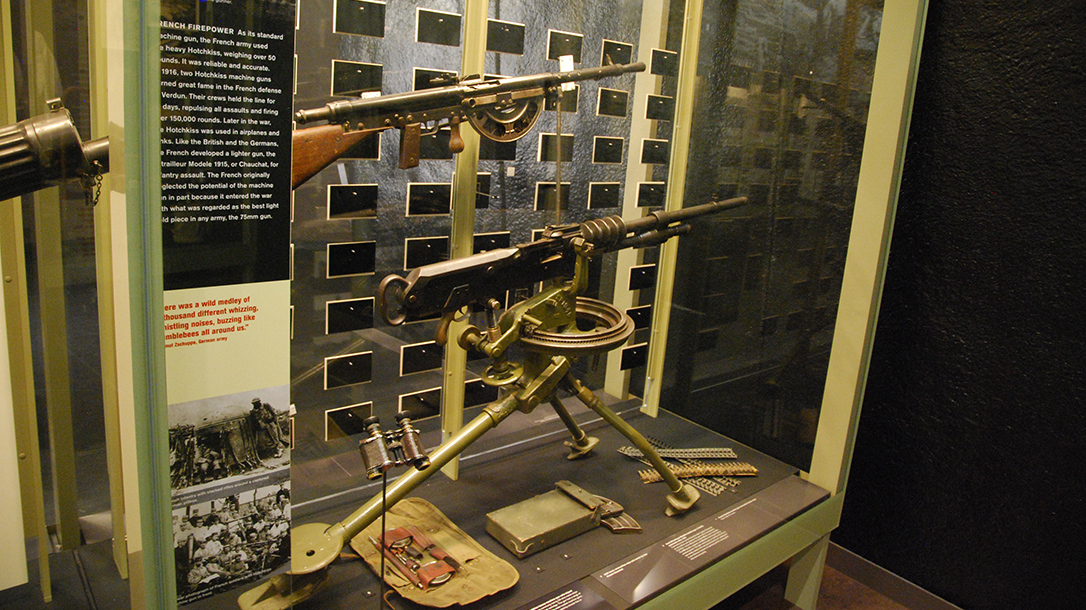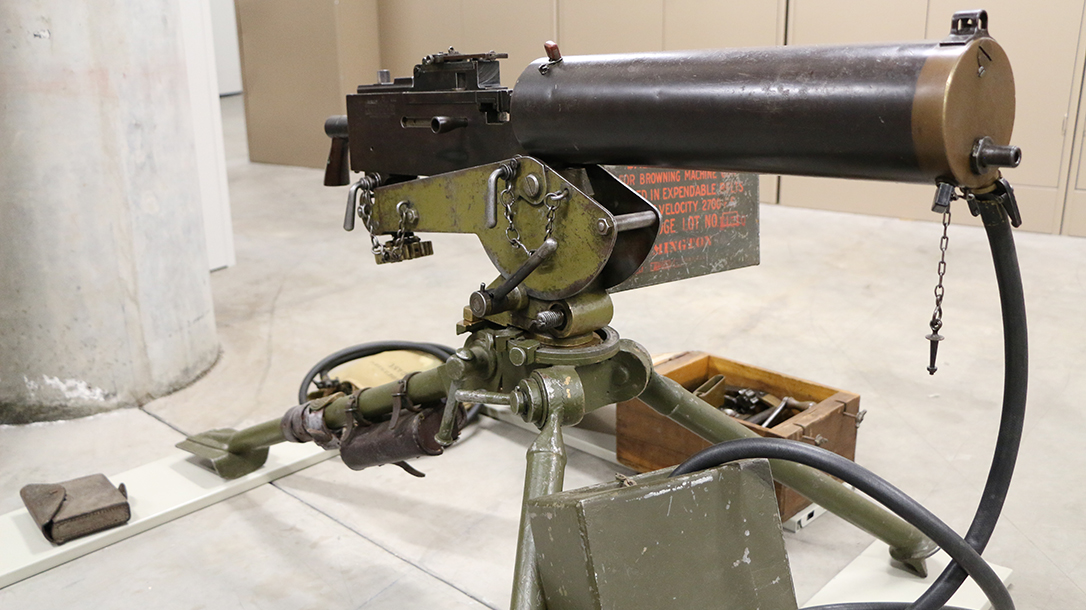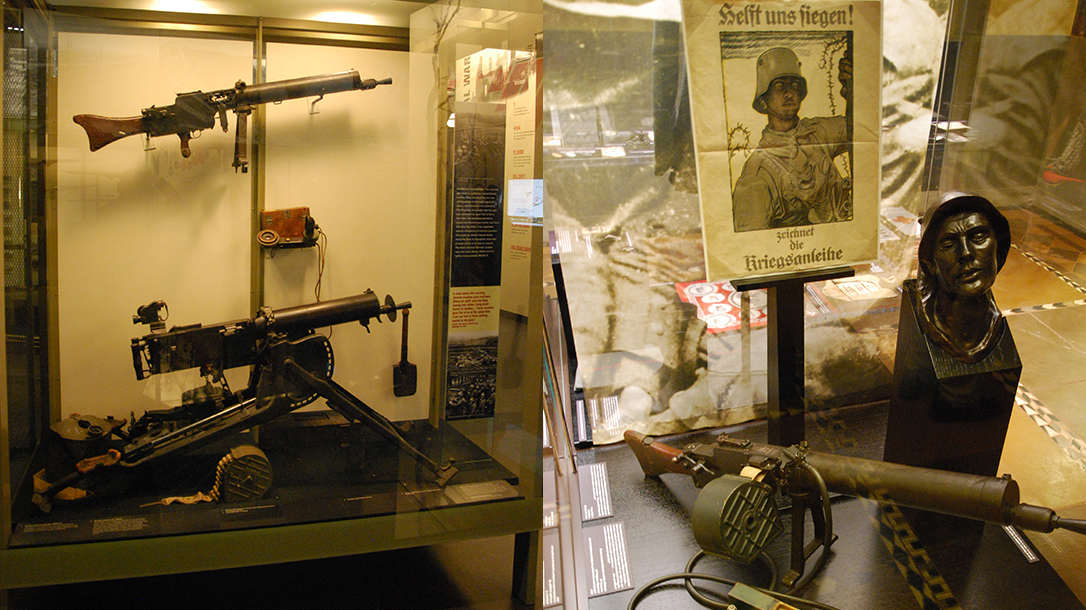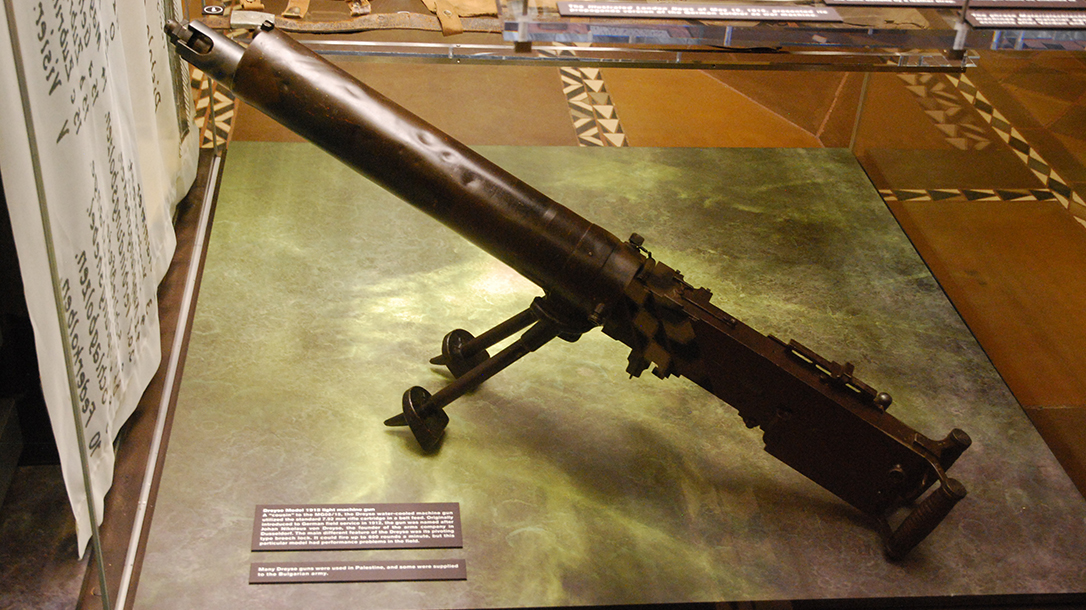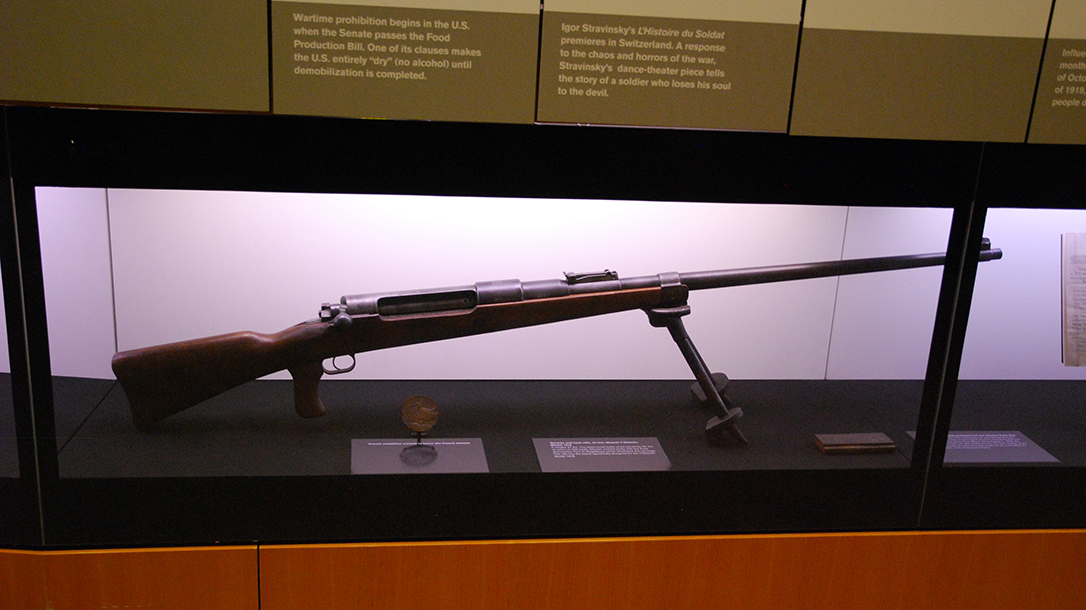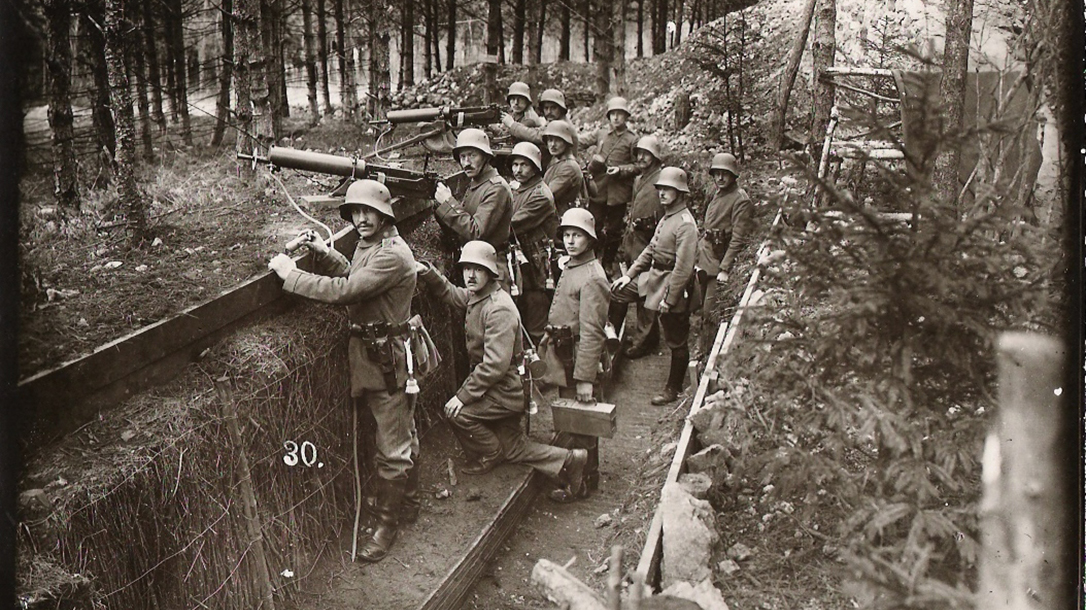Trenches filled with mud and the constant threat of artillery bombardment are likely the most common images people conjure when they think of World War I. It was a conflict with static lines and little movement. Men would rush across no-man’s-land to be cut down by enemy fire. However, the war was one of innovation as well, like how small arms played a role.
It wasn’t the first time aircraft and submarines were used in combat. However, it was the first time these inventions played a significant role. The First World War was, of course, when the tank entered the fray and rolled across the battlefield, changing the way future wars would be fought. It was the war when poison gas was used. And it was also a war when armies tried to utilize pigeons to deliver messages and still relied on cavalry.
Advertisement — Continue Reading Below
War was truly at a crossroads and this was most notable in the small arms.
When World War I broke out in 1914, all nations were utilizing bolt action rifles, which actually was a rather new invention that had only been developed less than 40 years earlier.
We may not think of this as revolutionary, but compare that to history. The ability for soldiers to fire even 10 shots in one minute was a marked improvement of the three shots a well-trained infantryman could fire only 100 years earlier when Napoleon attempted to dominate Europe.
Advertisement — Continue Reading Below
By the end of the war in 1918, small arms technology leaped forward as the submachine gun, automatic rifle and even a precursor to the assault rifle were developed. Yet, if one category of small arms could define World War I, it was the machine gun.
“Machine guns gave the capacity for a huge amount of firepower that could be delivered quickly and accurately,” said Doran Cart, senior curator at the National World War I Museum and Memorial in Kansas City. “The differences between a light machine gun and heavy machine guns were weight and range, but also in placement and use. The machine gun’s recoil during firing was supported by a heavy fixed mount. It was also used in indirect fire and as an anti-aircraft weapon.”
The killing capability of the machine gun was noted by the soldiers of the era:
Advertisement — Continue Reading Below
“At the beginning of the war, the Germans had more [machine guns] than we had. Every time a machine gun opened fire in our sector, my men would listen carefully. When someone said ‘It’s the coffee mill,’ his remark would send a tingle down our spines. I know nothing more depressing in the midst of battle than the steady tac-tac-tac of that deadly weapon. There appears to be nothing material to its working. It seems to be dominated and directed by some powerful, scheming spirit of destruction.”
— Quote from an unidentified French Alpine Chasseur (Light Infantry) in 1914
“The value of machine guns was a revelation to all of us, and though ours had done good work, the enemy’s had too, and they had lots of them.”
Advertisement — Continue Reading Below
— Lt. Wollocombe, 4th Middlesex, near Mesvin in August 1914
Small Arms: German
The German MG08, which was adaptation of Hiram S. Maxim’s original 1884 Maxim gun, was one of the most produced machine guns of the war.
In 1914, Germany was producing some 200 each month. By 1916, that number increased to 3,000 per month. One year later the German industry was producing 14,400 per month. This meant the distance between the MG08 on the front lines also decreased.
Advertisement — Continue Reading Below
“Machine gun allotment on the Western Front in 1916 was one MG08 for about each 62 yards,” Cart said. “That number increased in 1918 to about one machine gun for each 27 yards.”
If the MG08 had one failing, it’s that it was primarily a defensive weapon and Germany needed to break the Allied lines if it sought to end the war. This is why the military developed the MG08/15 as a “light machine gun.”
Advertisement — Continue Reading Below
“It was developed for rapid movement,” Cart explained.
Designed to be manned by four trained infantrymen, the MG08/15 utilized a short bipod instead of the four-legged sled mount. It also featured a pistol grip.
It weighed 39.68 pounds for just the gun body and almost another 8 pounds in the water jacket to keep the barrel cool. All of that doesn’t factor the weight of the ammunition.
The MG08/15 provided greater mobility than most heavy machine guns. But, again, it took a team to move it. Anyone familiar with video games such as “Battlefield 1” should find the notion of running and gunning with the MG08/15 simply laughable!
Small Arms: French
The French military developed its own portable automatic weapon, one which has gained the dubious distinction of being considered among the worst small arms ever designed.
“Automatic machine rifles like the French Mitrailleur Modele 1915, or Chauchat, were carried with the infantry in the assault,” Cart explained. “With firepower the key in limited advances, a light machine gun was absolutely essential.”
Today, among firearms enthusiasts who have never actually fired the Chauchat, it is remembered for being unreliable. Its open magazine no doubt allowed mud and grime to help cause jams and misfires.
However, the Chauchat was a revolutionary weapon that experienced “growing pains” that cost lives — much like the M-16 would in Vietnam.
There was another issue with the Chauchat. Americans who utilized the weapon in the latter stages of the war were reissued with guns that badly needed servicing — or worse, were given ones that had been re-chambered for American cartridges. The result was an automatic rifle/light machine gun that needed proper training and, more importantly, proper care and cleaning.
When a Chauchat is treated well, it is a very reliable weapon. It gave mobility and firepower to soldiers. In fact, it could be argued that the Chauchat was in this way the forefather of the modern assault rifle.
Small Arms: American
However, the Chauchat wasn’t the only example of forward thinking in this regard. The American military wasn’t entirely prepared for the war, but still managed to develop a very fine automatic rifle that was unlike anything else that either side was able to field.
“The Browning Automatic Rifle (B.A.R.) Model 1918 — 30.06 caliber — weighed 16 pounds and it provided a mobile, rapid-fire weapon for infantry in attack,” Cart said. “Many officers reported that ‘these guns received hard usage, being on the front for days at a time, yet they invariably functioned well.’ It was a true American-designed weapon developed for the war. By Nov. 11, 1918, there were 52,238 on hand.”
While the weapon only held 20 rounds in its box magazine, trained soldiers could fire, remove and replace the magazine offering an impressive rate of fire.
“A good B.A.R gunner could fire an average rate of 80 to 100 rounds per minute,” Cart added.
The B.A.R. was not the only American invention to shake things up in trenches.
One small arm, while not entirely revolutionary, was despised by the Germans. This was the U.S. Model 1917 trench shotgun.
Also called Model 1897 Winchester, the weapon was devastating in narrow trenches.
“Trench guns were used at close-range in attacks and raids, in defense, and guarding prisoners,” Cart said. “Their deadly effectiveness in the close quarters of trenches actually led to a protest by the German Army of ‘schrecklichkeit’ or ‘barbarism,’ which the American response was basically ‘we didn’t start the war, but intend to finish it with the tools at hand.'”
